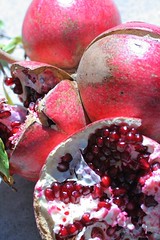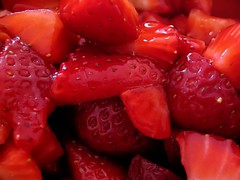Can yoga or Pilates help back pain? Should you go for the burn when you've got a cold? Peta Bee on how to exercise with an illness or injury
Gym junkies swear that working out is a hard-core cure-all - it keeps the blood circulating to areas that need healing and sweats out severe colds. Are they aware, however, that exercise-related injuries are on the increase?
According to figures from Bupa Sports Injury clinics, up to 50,000 people suffer some form of sports injury every day, while research at the University of Arkansas revealed that there has been a 35% rise in gym injuries since the 80s. And with the flu season now upon us, many of even the most enthusiastic exercisers will be deliberating whether or not to hit the treadmill.
In some cases, experts say, persevering with your workouts can enhance recovery from illness and injury; in others, it can hamper it.
How to negotiate this minefield? Professor Thomas Weidner, director of athletic training at Ball State university, Indiana and a leading researcher in the effect of exercise on colds (and vice versa), says a consistent gym programme "pumps the immune system" and keeps us from getting colds in the first place. But if you do get a bout of the sniffles, should you forgo your gym sessions until you recover? Weidner says the decision should initially depend on how poorly you are feeling and "always listen to your body".
A useful strategy is to assess the severity of your cold. If you have a runny nose, sneezing or a sore throat (what Weidner calls "above-the-neck" symptoms), it is probably safe to exercise at a low intensity - walking, cycling or yoga - and it may even boost the activity of illness-fighting white blood cells. If, however, you are suffering from extreme tiredness, muscle-aches or feverish symptoms (below-the-neck), stay at home with a hot-water bottle.
According to guidelines from the
American Council on Exercise - a consumer watchdog on the fitness industry - allow at least two weeks for a full recovery if you have flu-like symptoms. Mild colds, though, are different. In various recent studies, Weidner and his colleagues inoculated subjects with rhinovirus and then asked them to follow either a moderate exercise regime (half-hour workouts at 70% of their maximum heart rates on treadmills, bikes or steppers for five days a week), or to remain mostly sedentary, except for a shortish walk to work. While the exercisers said they felt better after their gym sessions, there was no difference in symptoms between the groups.
"Nobody feels good when they have a head cold, but research says people can exercise," Weidner says. "It found that cold symptoms do not get worse after working out and that athletic performance does not suffer during light to moderate exercise. Neither the severity nor duration of symptoms seem to be affected."
Among the most common injuries to sporty types are pulled or torn leg muscles. Claire Small, a spokeswoman for the
Chartered Society of Physiotherapists, who specialises in treating musculoskeletal problems, says laying off workouts for a few days after pulling a muscle is essential: the healing process begins with an inflammatory response that can last for three to five days. "This is a crucial time during which rest - protection of the injured muscle is vital in order to prevent any further damage," Small says. "During the inflammatory reaction, the body produces chemicals and cells that remove dead muscle fibres and start the repair process."
Source - GuardianLabels: symptoms


